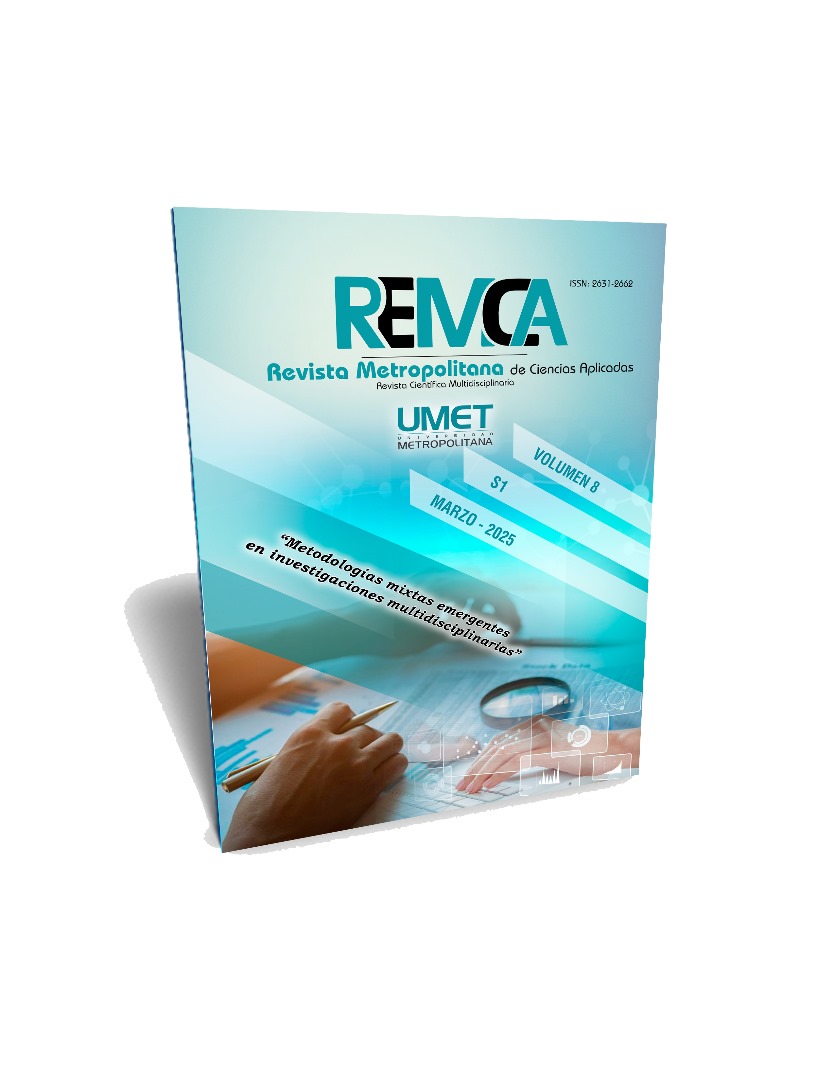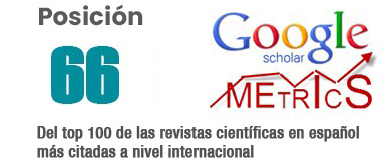Study of the internal configuration of the first permanent molar by CBCT and its implications in endodontics
DOI:
https://doi.org/10.62452/fnm64r44Keywords:
Endodontic treatment, anatomical variability, treatment techniquesAbstract
The permanent first molar presents a complex internal anatomy, especially in the mesiobuccal root (MB), which complicates endodontic treatments due to anatomical variability and the difficulty in locating the second mesiobuccal canal (MB2). The failure to properly disinfect and fill all the canals can lead to persistent infections and clinical failure. Various analysis methods, such as conventional radiographs, clearing techniques, and cone-beam computed tomography (CBCT), have been used to study root morphology. CBCT has shown high effectiveness in identifying accessory canals and complex configurations. The configuration of the root canals has been classified using the Vertucci system, with types I, II, and IV being the most frequent in the MB root. Frequencies vary between populations due to genetic and ethnic factors. Studies have identified a higher prevalence of a fourth root in the first maxillary molar in certain populations, highlighting the importance of adapting endodontic techniques to the specific characteristics of each group. In the Ecuadorian population, a 41.7% frequency for the MB2 canal has been identified, confirming the anatomical complexity of this root. The success of endodontic treatment depends on the thorough localization and treatment of all root canals. Anatomical variability requires specialists to be trained to accurately interpret images and adapt treatment techniques to the specific anatomy of each patient.
Downloads
References
Afrashtehfar, K. I. (2012). Utilización de imagenología bidimensional y tridimensional con fines odontológicos. Revista ADM, 69(3), 114–119. https://www.medigraphic.com/pdfs/adm/od-2012/od123d.pdf
Alavi, A. M., Opasanon, A., Ng, Y. L., & Gulabivala, K. (2002). Root and canal morphology of Thai maxillary molars. International Endodontic Journal, 35(5), 478–485. https://doi.org/10.1046/j.1365-2591.2002.00511.x
Al-Saedi, A., Al-Bakhakh, B., & Al-Taee, R. G. (2020). Using cone-beam computed tomography to determine the prevalence of the second mesiobuccal canal in maxillary first molar teeth in a sample of an Iraqi population. Clinical, Cosmetic and Investigational Dentistry, 12, 505–514. https://doi.org/10.2147/CCIDE.S281159
Altunsoy, M., O., E., Gulsum Nur, B., Sami Aglarci, O., Gungor, E., & Colak, M. (2015). Root canal morphology analysis of maxillary permanent first and second molars in a southeastern Turkish population using cone-beam computed tomography. Journal of Dental Sciences, 10(4), 401–407. https://doi.org/10.1016/j.jds.2014.06.005
Baratto, F., Zaitter, S., Aihara, G., Alves, E., Abuabara, A., & María, G. (2009). Analysis of the internal anatomy of maxillary first molars by using different methods. Journal of Endodontics, 35(3), 337–342. https://pubmed.ncbi.nlm.nih.gov/19249591/
Betancourt, P., Aracena Rojas, S., Navarro Cáceres, P., & Fuentes, R. (2015). Configuración anatómica del sistema canalicular de la raíz mesiovestibular del primer molar maxilar. Avances en Odontoestomatología, 31(1), 11–18. https://www.researchgate.net/publication/275670552_Configuracion_anatomica_del_sistema_canalicular_de_la_raiz_mesiovestibular_del_primer_molar_maxilar
Cardona-Castro, J. A., & Fernández-Grisaies, R. (2015). Anatomía radicular, una mirada desde la microcirugía endodóntica: Revisión. CES Odontología, 28(2), 70–99. http://www.scielo.org.co/scielo.php?script=sci_arttext&pid=S0120-971X2015000200007&lng=en
Granda, G., Caballero, S., & Agurto, A. (2017). Estudio de la anatomía de raíces y conductos radiculares en segundas molares permanentes mandibulares, mediante tomografía computadorizada de haz cónico en población peruana. Odontología Vital, (26), 5–12. http://www.scielo.sa.cr/scielo.php?script=sci_arttext&pid=S1659-07752017000100005&lng=en
Lee, J., Kim, K., Lee, J., Park, W., Jeong, J., Lee, Y., Gu, Y., Chang, S., Son, W., Lee, W., Baek, S., Bae, K., & Kum, K. (2011). Mesiobuccal root canal anatomy of Korean maxillary first and second molars by cone-beam computed tomography. Oral Surgery, Oral Medicine, Oral Pathology, Oral Radiology, and Endodontology, 111(6), 785–791. https://pubmed.ncbi.nlm.nih.gov/21439860/
Montesinos-Rivera, V., Medina-Sotomayor, P., & Sánchez-Ordóñez, M. J. (2021). Análisis de la morfología interna del primer molar superior mediante la técnica de diafanización. KIRU, 18(3), 133–139. https://www.researchgate.net/publication/355466624_Analisis_de_la_morfologia_interna_del_primer_molar_superior_mediante_la_tecnica_de_diafanizacion
Restrepo, I. F., Alfonso Morales, G., Zamora, I. X., & Martínez, C. H. (2023). Anatomía de la cámara pulpar y sistema de conductos radiculares: Estrategias pedagógicas una revisión de literatura. Revista Estomatología, 31(2), e12694. https://docs.bvsalud.org/biblioref/2023/10/1511309/v31n02a01.pdf
Valencia de Pablo, Ó., Estevez, R., Heilborn, C., & Cohenca, N. (2012). Anatomía radicular y configuración de conductos del primer molar inferior permanente. Quintessence (ed. esp.), 25(9). https://www.elsevier.es/es-revista-quintessence-9-articulo-anatomia-radicular-configuracion-conductos-del-S0214098512002115
Zheng, Q., Wang, Y., Zhou, X., Wang, Q., Zheng, G., & Huang, D. (2010). A cone-beam computed tomography study of maxillary first permanent molar root and canal morphology in a Chinese population. Journal of Endodontics, 36(9), 1480–1484. https://pubmed.ncbi.nlm.nih.gov/20728713/
Downloads
Published
Issue
Section
License
Copyright (c) 2025 María Belén Muñoz-Padilla, Camila Alejandra Villafuerte-Moya, Verónica Alicia Vega-Martínez (Autor/a)

This work is licensed under a Creative Commons Attribution-NonCommercial-ShareAlike 4.0 International License.
Authors who publish in Revista Metropolitana de Ciencias Aplicadas (REMCA), agree to the following terms:
1. Copyright
Authors retain unrestricted copyright to their work. Authors grant the journal the right of first publication. To this end, they assign the journal non-exclusive exploitation rights (reproduction, distribution, public communication, and transformation). Authors may enter into additional agreements for the non-exclusive distribution of the version of the work published in the journal, provided that acknowledgment of its initial publication in this journal is given.
© The authors.
2. License
The articles are published in the journal under the Creative Commons Attribution-NonCommercial-ShareAlike 4.0 International License (CC BY-NC-SA 4.0). The terms can be found at: https://creativecommons.org/licenses/by-nc-sa/4.0/deed.en
This license allows:
- Sharing: Copying and redistributing the material in any medium or format.
- Adapting: Remixing, transforming, and building upon the material.
Under the following terms:
- Attribution: You must give appropriate credit, provide a link to the license, and indicate if any changes were made. You may do this in any reasonable manner, but not in any way that suggests the licensor endorses or sponsors your use.
- NonCommercial: You may not use the material for commercial purposes.
- ShareAlike: If you remix, transform, or build upon the material, you must distribute your creation under the same license as the original work.
There are no additional restrictions. You may not apply legal terms or technological measures that legally restrict others from doing anything the license permits.




